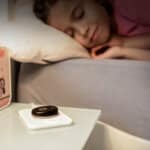Building Communication Skills for Older Child Cochlear Implant Recipients

If your child has received a cochlear implant at an older age, like from age 5–12, he or she shouldn’t be treated the same way as a child who has received one at a younger age. That’s because, as a child nears the teenage years, they start to establish their own role in society; for some, this may be the first time that they confront their hearing loss.
If this sounds like what your child may be going through, then the goal when it comes to rehabilitation is typically to improving or building communication skills. There are generally three different categories of older children who receive a cochlear implant:
- Progressive or sudden hearing loss; after developing language skills at an age-appropriate level.
- Used a hearing aid before the cochlear implant; developed some language skills, but not quite to an age-appropriate level.
- Child has additional challenges and minimal or no language development.
Knowing which one your child best fits into will influence what specific activities you do to build these skills. Here are tips for each of the three categories. Feel free to jump straight to the right section for your child:
1. Progressive or sudden hearing loss; after developing language skills at an age-appropriate level
For a child who has received a cochlear implant after developing listening and spoken language skills, the main task is to relearn his or her auditory skills. Listening is the best way to build these skills: repeated access to auditory information. Your child shouldn’t need to use visual cues, like lip reading or gestures.
Here are a few strategies and activities that you and your child can do:
- Practice listening to, and identifying, words that sound similar: for example, fun and sun or bat and hat.
- Speech tracking, or listening to a sentence being read and then repeating it back word-for-word.
- Auditory tracking, or listening to some text being read and following along by pointing to the printed words as they’re said.
- Listening to music while reading along with the lyrics.
- Listening to audiobooks and reading the book at the same time.
- Watching familiar movies, without captions, and trying to follow the dialogue.
- Telling a short story and then asking your child questions about what you said to build auditory memory, retention, and information recall.
- Reading a list of words loaded with the target sounds that your child is working on improving, like /s/ or /r/.
- Have your child practice saying words, phrases, or sentences with these target sounds, and then give feedback on their pronunciation.
2. Used a hearing aid before the cochlear implant; developed some language skills but not quite to an age-appropriate level.
For a child who has used a hearing aid and developed some language skills, the goal is to improve his or her listening and spoken language level. The main way for your to develop the skills is through listening. If your child has had a significant language delay, you may need to add visual cues like speech reading, gestures, and printed cues like pictures or books.
If your child uses sign language, keep it up. Monitor his or her auditory development to see if those skills can be developed to the same level as with sign language. When they reach the same level, that’s a good time to transition from signing to only listening as the main means of communication.
Auditory development should progress roughly in the order of Detection, Discrimination, Identification, Comprehension.
- Detection: Use the Ling Six Sound Check and have your child repeat the sound.
- Discrimination: Start with familiar vocabulary with words and phrases that differ in length and intonation, like “What time is it?” vs. “Goodbye” vs. “It’s hot outside today.”
- Identification: Increase vocabulary and auditory memory by starting with familiar vocabulary, a small number of choices, and short utterances—then add in new vocabulary, a large set of choices—and finally lengthier sentences or paragraphs of information.
- Comprehension: Identify objects by describing them, answer questions, and understand abstract language like inferences.
Here are a few strategies and activities that you and your child can do, and if your child is successful in these, then add some more challenging exercises like those in section 1 (above):
- Pick a range of numbers and then ask questions like:
- What comes before number x? What number comes after x?
- What number is between x and z?
- How much is x plus/minus y?
- What day of the week is August 15? September 21? and so on.
- Have your child write or say a series of numbers, dates, or times that you have said.
- Speech perception: say a pair of words that sound similar, like ball and doll or hat and bat, and see if your child can hear the difference.
- Speech tracking: have your child listen to a phrase or sentence and repeat it exactly as you said it.
- Auditory paragraph: have your child listen to something and then answer questions about it. Start with a short paragraph and then start with longer or more complex passages.
- Write out sentences related to a topic, say one aloud, and then have your child identify which one you said.
- Say a list of words related to a topic and have your child repeat the words.
- Play a game of 20 Questions.
- Play a memory game, but instead of turning pictures over play it all through speaking. When your child picks a tile, say what it is and describe it.
3. Child has additional challenges and minimal or no language development.
For a child who has had minimal or no language development before receiving a cochlear implant, the focus should be on building his or her functional and practical vocabulary.
Auditory development should progress roughly in the order of Detection, Discrimination, Identification, Comprehension.
- Detection: Use the Ling Six Sound Check and have your child raise his or her hand when a sound is heard, and repeat it back to you if possible.
- Discrimination: use functional, familiar, and routine vocabulary with different lengths and intonation, like “Time to eat” vs. “See you later” vs. “Hello.”
- Identification: develop a functional vocabulary and understanding of routine words, phrases, and sentences that are frequently used. Build auditory memory by starting with a familiar vocabulary and shorter utterances, and then use a larger vocabulary with information being presented in a sentence. For more difficult sentences it might be necessary to add visual cues.
- Comprehension: identify objects by hearing their description, answering questions, or understanding abstract language like inferences. Your child might not reach this level through listening alone but visual cues can help.
Here are a few strategies and activities that you and your child can do, and if your child is successful in these then add some more challenging exercises like those in sections 2 or 1 (above):
- Make a communication book that lists vocabulary that’s meaningful, useful, and important to your child. Have your child read through these lists and repeat back the printed words.
- Give simple, understandable and functional information or directions, like “Go take a bath” or “We are going to Grandpa’s house.” Start by pairing these spoken words with visual cues, and as your child starts to understand then try speaking only.
- Practice simple speech sounds and then use a vocabulary that contains these sounds. Your goal is to help your child produce intelligible speech, so focus on words with easier sounds like “no,” “all done,” or “I want more” instead of “That’s not acceptable,” “It’s complete,” or “May I have another one”.
For All Children
For any child who has received a cochlear implant at an older age, the focus should be on developing listening and spoken language skills—as well as building their confidence in these skills. Providing them with ample opportunities to be successful, and praising their successes, will help promote positive growth.
This post was written with help from MaryKay Therres, a rehabilitation specialist at MED-EL.
Subscribe to the MED-EL blog to get more tips for you and your child!
Thanks for your message. We will reply as soon as possible.
Send us a message
Field is required
John Doe
Field is required
name@mail.com
Field is required
What do you think?
© MED-EL Medical Electronics. All rights reserved. The content on this website is for general informational purposes only and should not be taken as medical advice. Contact your doctor or hearing specialist to learn what type of hearing solution suits your specific needs. Not all products, features, or indications are approved in all countries.


